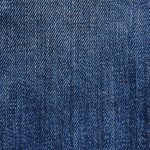You might think of stonewashing as just a technique to soften denim, but it's much more than that. This method not only transforms fabric textures but also opens up a realm of creative possibilities in textile art. As you explore its history and evolution, you'll discover how artists have utilized stonewashing to achieve unique color variations and sustainable practices. But what lies ahead for this technique in the ever-changing landscape of textile art? The answer could reshape how you view fabric's role in artistic expression.
Table of Contents
Key Takeaways
- Stonewashing enhances fabric softness and comfort, creating a relaxed, lived-in feel preferred by consumers for everyday clothing.
- The technique produces unique color variations and textures, inviting exploration of style and evoking nostalgia in textile art.
- Sustainable practices in stonewashing reduce environmental impact by conserving water and minimizing harmful substances in textile treatments.
- Stonewashing techniques have expanded beyond denim to include various fabrics, enriching artistic projects with unique textures and visual effects.
History of Stonewashing
Have you ever wondered how stonewashing evolved from a practical technique to a popular trend in textile art? This fascinating transformation began in the late 20th century, primarily aimed at enhancing denim's softness and creating a worn-in look.
Originally, manufacturers used stones to agitate fabric in washing machines, effectively softening it while achieving a unique texture. This method not only reduced the stiffness of denim but also gave garments character, appealing to consumers looking for more casual and comfortable clothing.
As the 1980s rolled around, stonewashing gained immense popularity, with brands embracing the aesthetic for their collections. You might remember how iconic stonewashed jeans became a staple in fashion, representing a laid-back lifestyle.
This trend didn't just stop at denim; artists and designers started experimenting with stonewashing techniques on various fabrics, pushing the boundaries of textile art.
The artistic community recognized stonewashing's potential to create distinctive pieces, blending practicality with creativity. Today, it's celebrated not just for its functionality but also for its ability to transform textiles into unique works of art, showcasing the endless possibilities of fabric manipulation.
Techniques Used in Stonewashing
Exploring various techniques in stonewashing reveals how artists and manufacturers achieve that coveted worn-in look while enhancing fabric softness.
One common method involves using natural stones, like pumice, in a washing machine. You load the fabric with stones, which gently abrade the surface, creating a faded appearance.
Another technique is the use of enzymes, which break down cellulose in cotton fibers. This process not only softens the fabric but also results in a unique texture, as the enzymes target specific areas for fading. You can even combine stonewashing with enzymatic action for a more complex finish.
Chemical stonewashing is another approach, where you use bleach or other chemicals alongside stones. This method can produce dramatic color changes and a distinctive, distressed look.
Additionally, some manufacturers opt for laser technology to achieve precise designs. Lasers remove layers of fabric, allowing for intricate patterns that mimic traditional stonewashing effects without the physical abrasion.
Whichever method you choose, understanding these techniques can elevate your textile art, making it not only visually appealing but also tactilely inviting.
Impact on Fabric Texture
When you explore stonewashing, you'll notice how it enhances the softness and comfort of the fabric.
This process not only makes the material feel better against your skin but also creates unique variations in its visual appeal.
You'll find that each piece tells its own story through texture and style.
Enhanced Softness and Comfort
Stonewashing consistently enhances the softness of fabrics, making them more comfortable to wear and touch. When you wear stonewashed garments, you instantly notice how the fabric feels against your skin. This enhanced softness results from the unique process, where stones are tumbled with the fabric, creating a smoother, more inviting texture.
You might find that stonewashed items are less abrasive and more pleasant to wear over extended periods. This comfort is especially important in everyday clothing, where you want to feel at ease while going about your day. The gentle abrasion from the stones breaks down the fibers, resulting in a relaxed, lived-in feel that many people prefer.
Moreover, the softness achieved through stonewashing often leads to a natural drape, helping garments fit better and move with your body. This quality can elevate your overall experience with the fabric, making it a go-to choice for casual wear.
Whether you're in jeans or a soft t-shirt, stonewashing plays a crucial role in ensuring you enjoy the comfort and softness that enhances your daily wardrobe.
Variations in Visual Appeal
The unique stonewashing process not only enhances softness but also creates distinct variations in visual appeal, transforming the fabric's texture and overall aesthetic.
When you wear or work with stonewashed fabrics, you'll notice a rich depth in color and a subtle, worn-in look that adds character to the material. This process often results in a unique finish, where the surface exhibits slight fading, contrasting shades, and even a vintage appearance.
You'll also find that the texture varies widely depending on the stones used, the duration of the washing process, and the type of fabric. For instance, a cotton blend might feel smooth and soft, while a heavier denim may feature a more rugged, tactile feel. These variations invite you to explore how different textures can influence your perception of style and comfort.
Additionally, the visual appeal of these fabrics can evoke a sense of nostalgia, making them perfect for casual or artistic applications. Whether you're crafting garments or simply choosing what to wear, stonewashed fabrics offer a versatile canvas, marrying comfort with a distinct, eye-catching aesthetic.
Color Variations Achieved
You can achieve a wide range of color variations through stonewashing, transforming fabric into unique, visually appealing pieces. This process involves treating fabrics with stones, which not only softens the material but also fades and alters its color. You'll notice that the intensity of the color change depends on the fabric type, the stones used, and the duration of the washing process.
For instance, denim often undergoes stonewashing to create that sought-after vintage look. The result can range from light pastel shades to deep indigo hues with subtle variations that enhance the fabric's character.
You can experiment with different washing techniques, like varying the load size or mixing in other elements, to achieve even more distinctive color effects.
Additionally, stonewashing can highlight unique patterns and textures in the fabric, adding depth to the colors. Whether you're aiming for a soft, worn appearance or a bold contrast, stonewashing provides the flexibility to create exactly what you envision.
Sustainability Benefits
When you consider stonewashing, you'll notice its significant sustainability benefits.
It reduces environmental impact by using fewer harmful chemicals and promotes resource efficiency through practices that minimize waste.
Plus, stonewashed fabrics often last longer, which means less frequent replacements and a smaller carbon footprint.
Environmental Impact Reduction
Stonewashing techniques can significantly minimize environmental impact by reducing water usage and chemical waste in textile production. When you choose stonewashed textiles, you're supporting a process that often employs fewer harmful substances compared to traditional dyeing and finishing methods. This means that less pollution enters our waterways, which is vital for protecting aquatic ecosystems.
Moreover, the stonewashing process usually requires less water than many conventional textile treatments. By adopting these techniques, producers can save millions of gallons of water, a crucial resource in today's world. You'll also find that many stonewashing processes are now utilizing eco-friendly stones and enzymes, which further cut down on pollution and waste.
As you explore stonewashed fabrics, you're actively participating in a more sustainable textile industry. By prioritizing these methods, you're contributing to a circular economy where materials are recycled and reused, reducing the overall carbon footprint.
This shift not only benefits the environment but also encourages brands to innovate and adopt more sustainable practices. Overall, choosing stonewashed textiles is a meaningful step toward a greener future.
Resource Efficiency Practices
Adopting resource efficiency practices in stonewashing not only enhances sustainability benefits but also optimizes material usage and minimizes waste throughout the textile production process. By carefully selecting the right types of stones and adjusting washing cycles, you can significantly reduce water and energy consumption. This means you're not just cutting costs; you're also making a positive impact on the environment.
Implementing closed-loop water systems is another effective strategy. By recycling and treating water used in stonewashing, you can minimize the volume of wastewater generated. This approach conserves precious water resources and helps prevent pollution from harmful chemicals often used in textile processing.
Additionally, consider using biodegradable stones or alternatives that create a similar distressed look while being gentler on the planet. This choice not only supports sustainable practices but also appeals to eco-conscious consumers.
Longevity of Fabrics
Ensuring the longevity of fabrics not only enhances their appeal but also contributes to sustainability by reducing the need for frequent replacements. When you invest in durable textiles, you're making a choice that benefits both your wardrobe and the environment. High-quality fabrics, especially those subjected to stonewashing, often exhibit increased resilience, allowing them to withstand wear and tear over time.
Stonewashing techniques can soften materials, making them more comfortable while maintaining their structural integrity. This process helps fabrics to resist fading and fraying, ensuring they remain vibrant and intact longer. By choosing stonewashed textiles, you're embracing a style that's not only trendy but also practical.
Moreover, long-lasting fabrics mean fewer resources are consumed in the production of new garments, resulting in less water usage, reduced energy consumption, and decreased waste. You're actively participating in a more sustainable fashion cycle by prioritizing longevity.
Incorporating these durable pieces into your wardrobe ultimately supports a more eco-friendly lifestyle, allowing you to express your style while contributing to a healthier planet. So, next time you shop, consider the longevity of the fabrics you choose.
Applications Beyond Denim
Many textile artists are exploring innovative stonewashing techniques to enhance fabrics like cotton, linen, and even synthetic blends, broadening the creative possibilities beyond traditional denim.
You might find these applications in various artistic projects, including home décor, fashion design, and mixed-media art. By applying stonewashing to different materials, you can achieve unique textures and visual effects that elevate your work.
For instance, when stonewashing cotton, you can create a soft, worn-in feel that adds character to garments and accessories. In the world of linen, stonewashing can soften the fabric, making it more appealing for casual wear. Even synthetic blends benefit from this technique, as it allows you to manipulate colors and patterns, resulting in eye-catching pieces.
As you experiment with stonewashing, consider how it interacts with dyes and prints. This synergy can lead to unexpected outcomes that enhance your designs.
Moreover, you'll discover that the process can inspire you to push the boundaries of what's possible in textile art, inviting you to create pieces that resonate with your artistic vision.
Embrace the versatility of stonewashing and see where it takes your creativity!
Future of Stonewashing in Art
As textile artists continue to experiment with stonewashing techniques, the future promises exciting innovations that will reshape how you perceive and utilize this method in various art forms.
One key area of development lies in sustainable practices. You might find new eco-friendly stones and enzymatic solutions that minimize environmental impact while achieving unique textures and finishes.
Additionally, the integration of digital technology with stonewashing could lead to personalized designs. Imagine using laser engraving alongside stonewashing to create intricate patterns that reflect your artistic vision. This fusion could also open doors to collaborations across disciplines, blending textile art with graphic design and other media.
Moreover, you'll likely see stonewashing expand into unconventional materials, beyond traditional fabrics. Think about how this technique could transform home décor items, accessories, or even mixed-media artworks.
As you embrace these advancements, keep an eye on emerging trends in color application and textile manipulation. The future of stonewashing invites you to innovate, experiment, and redefine the boundaries of your artistic expression, ensuring this beloved technique remains relevant and exciting in the world of textile art.
Frequently Asked Questions
How Does Stonewashing Affect the Lifespan of Textiles?
Stonewashing softens fabrics, making them more comfortable to wear. However, it can weaken fibers over time, potentially reducing the lifespan of textiles. You should consider this effect when choosing garments for long-term use.
Can Stonewashing Be Applied to Non-Denim Fabrics?
Yes, you can apply stonewashing to non-denim fabrics. It enhances texture and softness, making items like cotton or linen feel more comfortable. Just ensure the fabric can withstand the process without losing integrity or shape.
What Types of Stones Are Commonly Used in Stonewashing?
You'll commonly find pumice stones and other abrasive rocks used in stonewashing. These stones help create that worn, faded look by gently scouring the fabric's surface during the washing process, enhancing its texture and appearance.
Are There Any Health Risks Associated With Stonewashing?
Yes, there are health risks associated with stonewashing. You might encounter harmful dust, chemical exposure, or respiratory issues if proper safety measures aren't taken. Always prioritize protection when working with stonewashing techniques to minimize these risks.
How Does Stonewashing Influence the Cost of Textile Production?
Stonewashing increases production costs due to additional processing, labor, and water usage. You're likely to see higher prices for garments that undergo this treatment, reflecting the complexity and time involved in achieving that worn look.
- Tetron Fabric for Marine Applications: Durability and Use Cases - June 18, 2025
- Tetron Fabric for Outdoor Furniture: Weather Resistance and Care - June 18, 2025
- Tetron Fabric for Wall Coverings: Style and Application Tips - June 18, 2025







